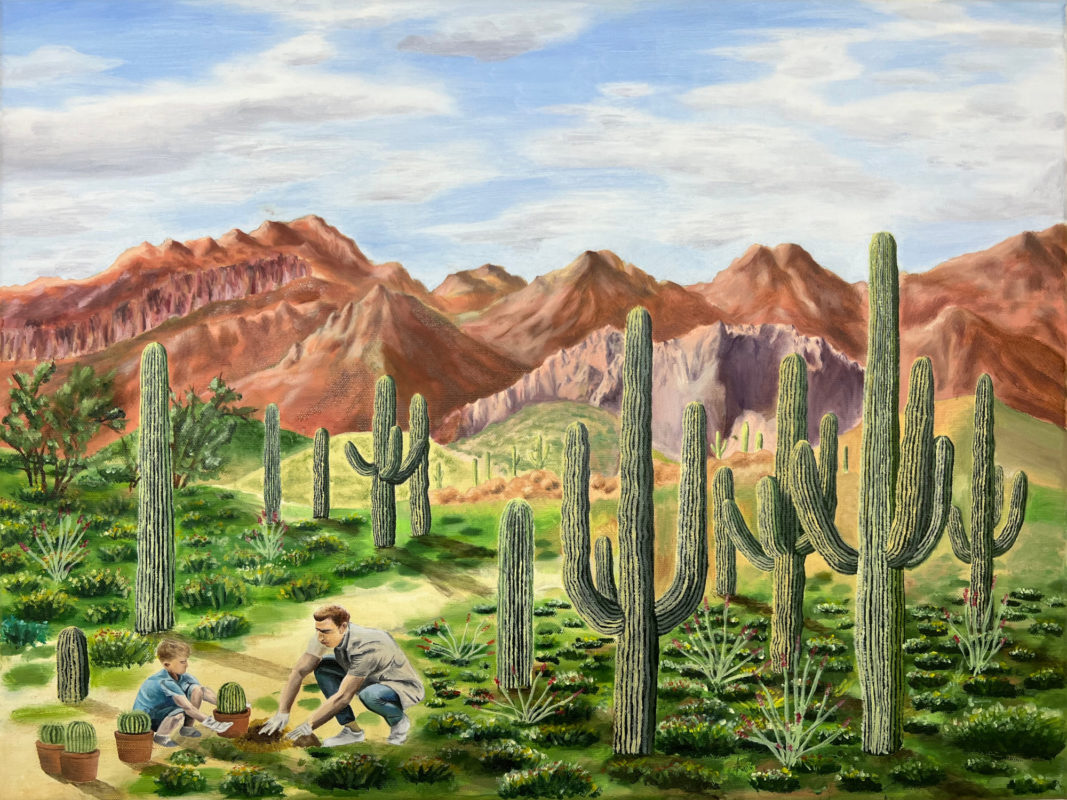Eco-Art Competition 2022
Thank you for visiting the 2022 Inspire Through Eco-Art, Plant the Seed GalleryWe appreciate your patience as the gallery is under review. Our esteemed judges are hard at work evaluating this year’s entry’s.
Stay tuned, finalists will be announced, check back soon.
Cacti are important plants in Arizona’s desert ecosystem. They provide nectar, food or even shelter for wildlife animals. As an Arizonan, I was surprised to learn that cacti also play an important role in combating global warming. When we talk about combating global warming, it is natural to think of trees in the forest. Few of us would link it to cacti in the desert. The role of cacti in reducing greenhouse gas CO2 is often overlooked, so it may surprise many people that cacti are carbon-eating machines. Cacti trap carbon dioxide as they grow. After they die, much of that carbon is transformed into an inorganic mineral, instead of being released back into the atmosphere. Cacti are not only an icon of the desert but also an effective tool to fight global warming in the southwest of the United States. Cactus seeds spread easily by natural influences such as wind, rain, or animals eating fruit from cacti. Cacti require little water and no chemical fertilizers. In the wild, they can thrive in tough desert habitats where other plants can’t survive. Planting a cactus seems trivial, but eventually it will populate a large area and make a sizable effect on combating global warming. To convey the message that small efforts can lead to big changes, I used oil paint on canvas. In the artwork, a boy and his father are planting cacti in the desert. Behind them, various cacti planted years ago and spread over time already cover the land and start combating global warming. I hope this artwork can inspire more people to contribute efforts, even as small as planting some seeds. Together, we can make a big improvement in our living environment.




